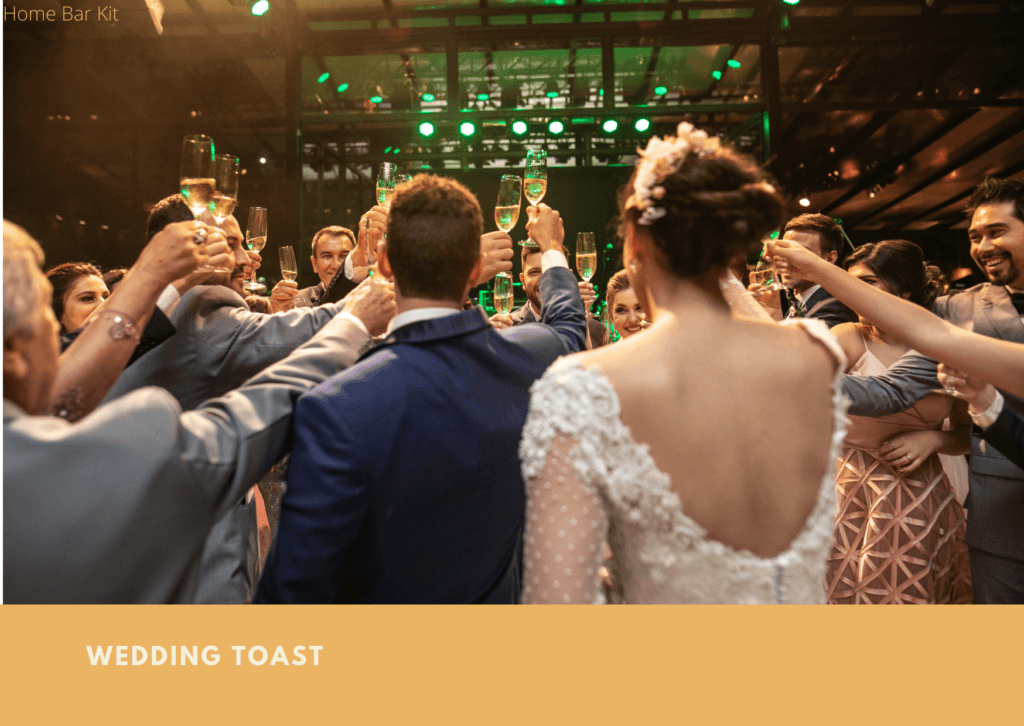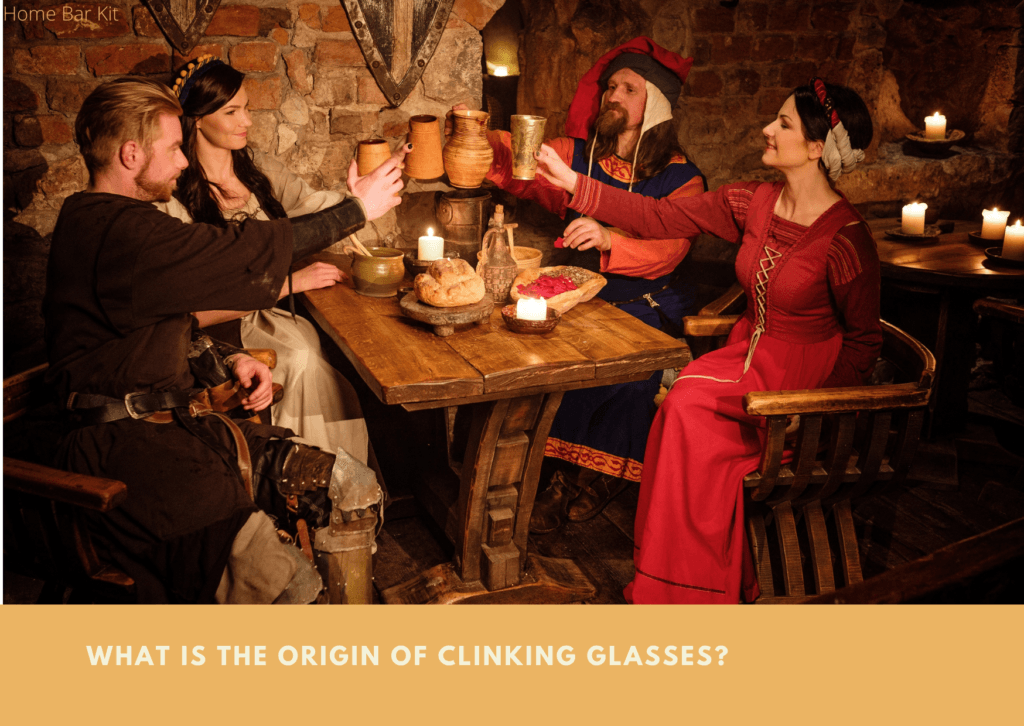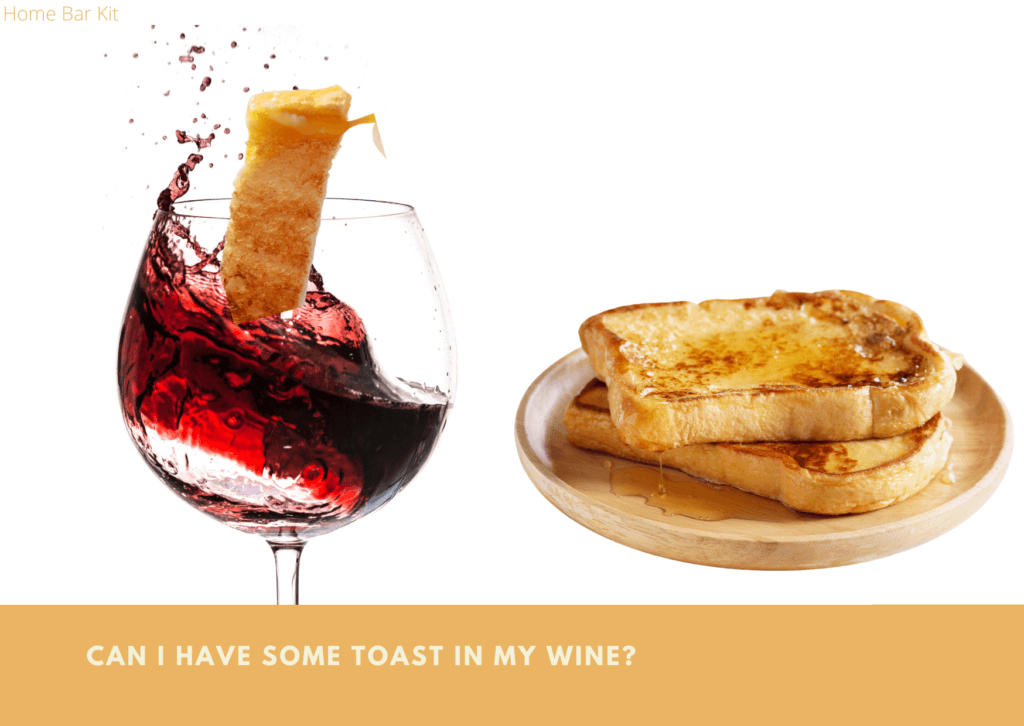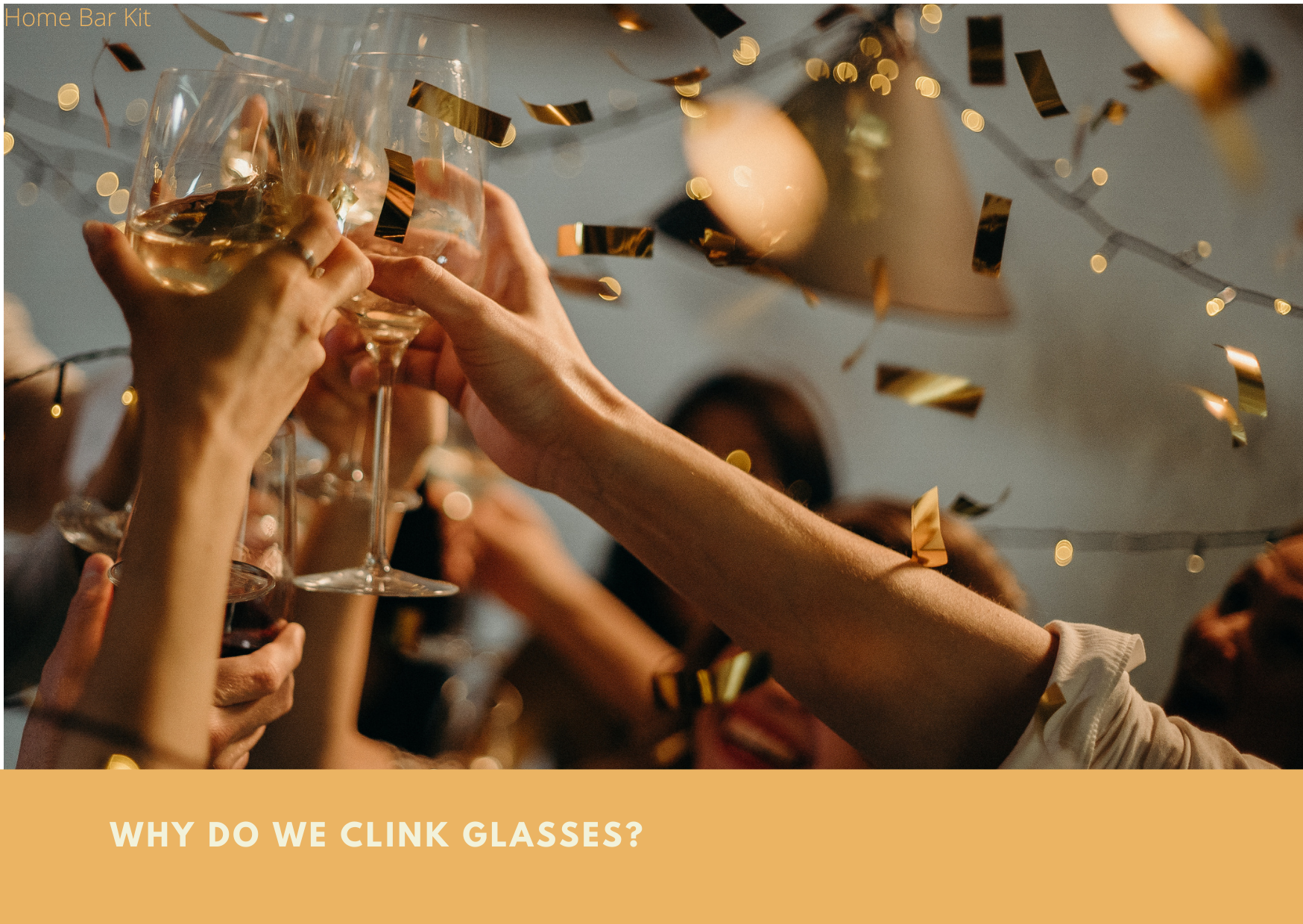Whether we are at the home bar, the local bar or enjoying a nice meal with friends, there is always a toast involved. Namely the raising of glasses, a gentle clink and the word ‘cheers’ or the term ‘good health’. It is something we have grown up with and has always been in our lives. But why do we clink glasses?
It is a ritual involving three parts that we do automatically. First we raise our glass, what does this mean? Secondly we clink them together, finally we say cheers, good health. Also where does the word toast fit into all this?
Why Do We Clink Glasses Before drinking?
To answer this question involves looking at the whole process, as there are three parts to it. Time changes many things, and as you can imagine time has change this process of celebration. Therefore the answer is not a conclusive one. In fact there is more than one answer, or theory as to why we raise, clink and cheers.
As for the toast, well that theory is just as interesting, it surprised me.
Table Of Contents
When Do We Clink Glasses?
Before we jump into the theories surrounding this old custom, lets have a look at when we practice this custom. Just to illustrate how often we use it and how common it is.
Wedding Toast

First off we have the traditional celebrations that everyone gets involved in at some point. A wedding is the obvious one, have you ever been to a wedding where there has not been a toast? Often these toasts will follow a speech.
The father of the bride will say a few words, welcome his daughters new husband into the family. And then wallop, please raise your glasses and toast the bride and groom, clink clink. Likewise, the best man will perform a similar speech and toast.
Funeral Toast
Just as we celebrate the coming together of two people and there well wished life together at their wedding. So too do we celebrate the life of a person that has passed. After a ceremony to mark the passing of someone dear in our lives, we hold a celebration.
This is known as a ‘Wake’ and although traditionally held before a funeral. In modern times it is a reception held after the funeral service. A chance for family and friends to remember, honor and celebrate the life of those who have passed. More information about a wake at MyFairwelling.
During a wake, there is often a toast made to the departed. Please raise your glasses to (name), may they rest in peace.
Birthday Toast
A birthday celebration is dotted with toasts and the clinking of glasses. Especially those significant numbers we hit as we age. From 18, 21, 30, 40, 50, 60, 70, 80, 90 to 100, if you are lucky. Whether we celebrate at home, at a restaurant, a bar or at a specially organized party, the result it the same.
There will always be a toast of some kind to mark a birthday. Raise, clink and cheers.
More Toasts
Just as we toast those three big events, we also toast countless other events, some big and some small. An engagement for marriage, a special event, passing a driving test. Likewise, passing a test or exam, enjoying a night out with friends. Such as drinks in a bar, a meal in a restaurant, sports events, music events, we will toast anything.
A promotion at work, moving house, winning the lottery, the last one would be a big toast, clink clink. It doesn’t matter how many people are involved either. A friend buys you a drink, you raise your glass, clink and say cheers.
Louise and I raise our glass, clink and say cheers every time we sit down for our evening meal. It is our way of showing our gratitude for the food we are about to eat, and the roof over our heads. At a recent night out with friends, we got our drinks, sat down, raised our glasses, clinked and cheers.
We all love to clink.
What Is The Origin Of Clinking Glasses?

Clinking glasses has become second nature to many, and the glass doesn’t have to contain alcohol. Clinking is for everyone, whether you drink alcohol or not. It has become a custom through the ages, but how did it come about?
Have You Poisoned My Drink?
Imagine that, your host poisoning the contents of your glass, a bit worrying. It is said that the clinking of glasses came about as a way to show the drink was free of poison. Apparently it was a bit of a trend in the old days, an easy way to bump someone off.
There are rumors that this may have come from pirates, who upon celebrating their ill gotten gains didn’t like to share. The least people they shared their treasure with, the more for themselves. Consequently, a little drop of poison in a tankard or two, would fix this.
Some bright spark decided that a good clang of tankards would cause the contents to spill drops into each other. If poison was present, they would all cop it. The clang, which is now a more delicate clink became a sign of trust, respect and good health.
Protection From Evil
How about this one for a theory, the clinking of glasses and a cheer would ward off evil spirits. Again the drinking vessels in the middle ages were somewhat more robust than today’s. So too, it was more of a clang than a clink.
By bringing the glass some what aggressively together, some of the contents would spill on the floor. This is said to be sharing your drink with the bad spirits, in the hope they would leave you alone.
Hail The Gods
In ancient days far long behind us it was tradition to pay homage to the gods. During a feast an offering was set aside, this could be blood or wine. A way to play tribute to the gods in return for good health and prosperity.
Drinking vessels raised to the heavens, clinked and tribute given to the gods with a toast of gratitude. Today, we still raise our glasses to the sky before we clink and toast.
The Sound Of A Clink
Additionally, we have the theory of the senses, our five senses and how we use them in the drinking experience. For example, a glass of wine, we can see it, touch it, smell it and taste it, what about the noise.
It is soundless, unless you count that wonderful sound of pouring from a fresh bottle of wine, the glug, glug. The clinking of glasses just before the point of drinking creates sound. A pleasant sound like music to the ears. Consequently all our senses are satisfied making the drinking experience complete.
Which theory is true, if any, it’s a mystery, but I like them all, they bring an interesting concept to clinking.
What about the Toast?
Can I have Some Toast In My Wine, Please?

How would you fancy a nice piece of toast in your wine? Not the most appetizing thought, but some say this is where toasting came from. Many of the wines served in olden days were not of the best quality. Being very acidic and not the best on flavor, in comes the toast.
Adding a piece of toast to the wine helped to reduce the acidity, whilst also helping to improve the flavor. Commonly a communal vessel would pass around from person to person, each one taking a sip. Wine finished and the toast is eaten. The loving cup is an example, a large cup passed from person to person to drink from.
Fast forward and today we tend to drink from single vessels, plus we have ditched the toast. A little more hygienic and less crumbs too.
Final Thoughts
To conclude, it is hard to say whether any of the aforementioned theories hold any real truth. But they are great stories nonetheless and make for great conversations whilst sipping a drink with friends.
Wherever or whenever the tradition started may be best to remain a mystery. However it is firmly set in our modern world. Every country has its own version of cheers, like Yamas in Greece, Serefe in Turkey, Prost in Germany and Salud in Spain.
But the procedure is the same, so next time you find yourself going through the process think about the history behind it. Raise your glass, clink and cheers.
Rob is a passionate home bar and pub shed enthusiast with a passion for craft beer. With hands-on experience in designing and building his own home bar, Rob shares his knowledge, tips, and inspiration to help fellow enthusiasts create their own perfect space. Alongside the world of home bars and pub sheds, Rob also explores the diverse and exciting realm of craft beer, providing honest reviews to help you discover your next favorite brew. Join Rob on a journey of flavor, design, and craftsmanship right here on Home Bar Kit.

